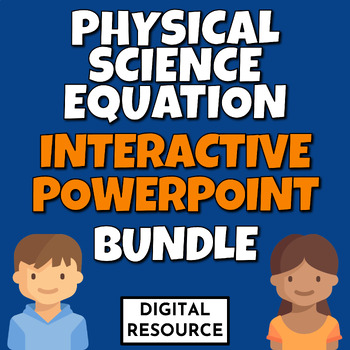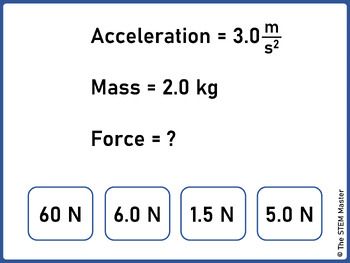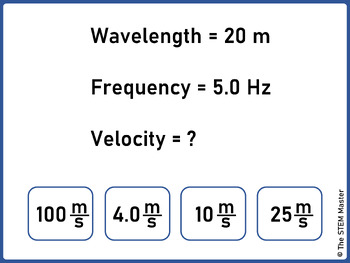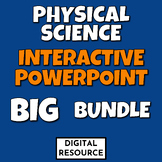Physical Science Equation Interactive PowerPoint Bundle Digital Resource
- Zip
- Google Apps™

Products in this Bundle (8)
showing 1-5 of 8 products
Also included in
- Physical science, physics digital interactive PowerPoint activity bundle covering equations, diagrams, chemical formulas and periodic table of elements. Digital interactive science task cards games, Distance Learning.each product has 2 challenges with 10 self-checking multiple-choice questions each❗Price $29.99Original Price $63.00Save $33.01
Description
Physical science, physics digital interactive PowerPoint activity bundle covering acceleration, force, momentum, resistance, pressure,speed,wave speed, work equations. Digital interactive science task cards games, Distance Learning.
each product has 2 challenges with 10 self-checking multiple-choice questions each
❗❗The students use the present mode and click on the correct answer to move to the next problem
⭐⭐⭐BIG Bundle of Chemistry⭐⭐⭐
⭐Digital Chemistry Worksheets Bundle
⚡️⚡️⚡️BIG Bundle of Physics⚡️⚡️⚡️
✅Physical Science Equation Worksheets Bundle
✅Physical Science Graphing Digital Worksheets Bundle for Google Classroom™
Credits:
❤️Images designed by Freepik
Terms of Use:
Purchase of this product is for single classroom use by the purchaser only. It is a violation for individuals, schools, and districts to redistribute, edit, sell or post this item on the Internet or to other individuals. Disregarding the copyright is a violation of the Digital Millennium Copyright Act and subject to legal action.
By purchasing this product you acknowledge that you have read and understood the Terms of Use






